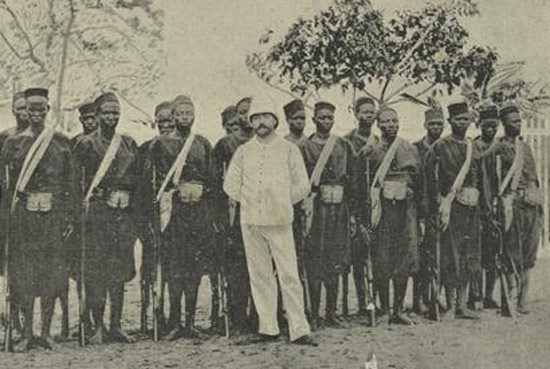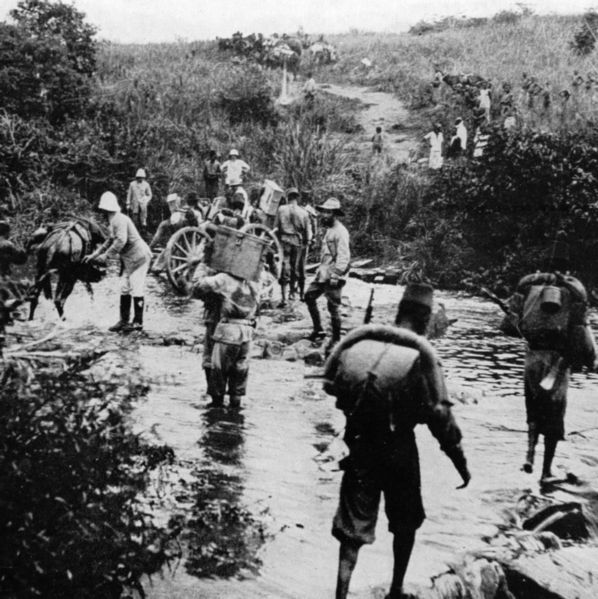
A studio photograph of an officer of the Force Publique – wearing a French Model 1886 pattern helmet
Belgian Congo was an interesting state, as it was originally the “Congo Free State” and was the private property of King Leopold II of Belgium. As such it was administrated through a quasi-private military force, the Force Publique (Public Force).
This was a gendarmerie and military force that existed from 1885 through the period of direct Belgian colonial rule (1908-1960). In early 1886 Captain Léon Roger was sent to Congo Free State to establish the force, under which he was promoted to “Commandant of the Force Publique.” Along with Roger, a number of Beligan officers and non-commissioned officers were dispatched to the territory and formed the nucleus of the officer corps.
All of the officers of the Force Publique were white, but were comprised of a mixture of Belgian regular soldiers as well as mercenaries.

A late 19th century Force Publique uniform and helmet in the Royal Museum for Central Africa in Belgium.
According to Peter Abbott in his book, Colonial Armies: Africa – 1850 to 1918, “Uniforms and insignia were not formally regulated until 1888… Head-dress was either a white tropical helmet, high crowned with a narrow brim, or blue peaked cap with a narrow soft crown and black leather peak.”
Abbott adds that, “Officers wore a gilt device on the front of the helmet consisting of a shield bearing the Belgian lion, surmounted by a crown and flanked by two rampart lions as supporters, the whole within a wreath.”
Numerous sources suggest the helmets were original produced in France, and photograph evidence – as well as those examples in museums – does seem to indicate that these are French Model 1886 sun helmets, of the pattern known as the “sugar loaf.” Given the close ties between France and Belgium in the late 19th century this is not surprising.
These colonial pattern helmets remained in use after Congo Free State became the Belgian Congo under colonial direct rule. However, during the First World War the Belgians began to adopt the Wolseley style helmet, which remained in use until the end of Belgian rule in the colony.
While the Wolseley helmet was adopted by the Belgian forces by this point it appears the French colonial pattern helmets were still in use by local forces.
Peter Suciu


